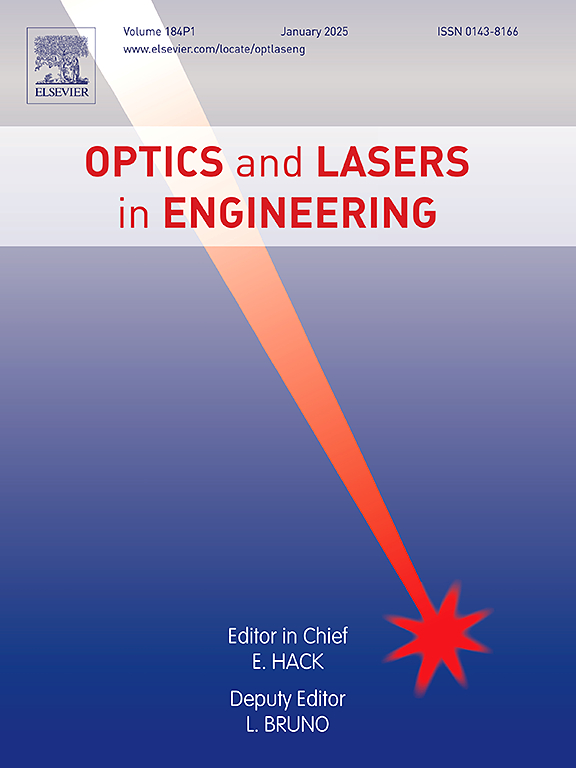A study on diffraction light spots with absolute central symmetry through Pancharatnam-Berry metasurface
IF 3.5
2区 工程技术
Q2 OPTICS
引用次数: 0
Abstract
Traditional diffractive optical elements (DOEs) usually use random arrangement as the initial phase, and the asymmetric diffraction structure is obtained by optimization iteration. The processing error of asymmetric diffraction structure will introduce irregular speckle noise and expand the influence of structural mutation on the uniformity of diffraction spot, which is difficult to meet the requirements of absolute centrosymmetric diffraction. In this paper, a diffractive metasurface based on Pancharatnam-Berry (PB) phase is proposed. Using the chiral sensitivity of the PB phase to circularly polarized light, the absolute centrosymmetric spot modulation is realized by constructing the mirror phase. Through theoretical research and simulation analysis, the absolute centrosymmetric characteristics of one-dimensional diffractive metasurfaces are demonstrated. A two-dimensional diffraction beam-splitting metasurface with a wavelength of 632 nm was fabricated by electron beam lithography. The relationship between spot uniformity and central symmetry of diffraction orders when linearly polarized light (LP) is incident is experimentally analyzed, which expands the absolute central symmetry research of two-dimensional diffraction metasurfaces. Subsequently, according to the characteristic that the spot symmetry is modulated independently with the dimension, the tilt measurement of the misalignment system is carried out. Experiments show that this method can be used as a candidate method for optical system calibration.
Pancharatnam-Berry超表面上绝对中心对称衍射光斑的研究
传统的衍射光学元件通常采用随机排列作为初始相位,通过优化迭代得到不对称的衍射结构。不对称衍射结构的加工误差会引入不规则散斑噪声,扩大结构突变对衍射光斑均匀性的影响,难以满足绝对中心对称衍射的要求。提出了一种基于Pancharatnam-Berry (PB)相位的衍射超表面。利用PB相位对圆偏振光的手性敏感性,通过构造镜像相位实现绝对中心对称光斑调制。通过理论研究和仿真分析,证明了一维衍射超表面的绝对中心对称特性。利用电子束光刻技术制备了波长为632 nm的二维衍射分束超表面。实验分析了线偏振光入射时光斑均匀性与衍射阶中心对称性的关系,拓展了二维衍射超表面绝对中心对称性的研究。随后,根据光斑对称性随尺寸独立调制的特点,对不对准系统进行了倾斜测量。实验表明,该方法可作为光学系统标定的候选方法。
本文章由计算机程序翻译,如有差异,请以英文原文为准。
求助全文
约1分钟内获得全文
求助全文
来源期刊

Optics and Lasers in Engineering
工程技术-光学
CiteScore
8.90
自引率
8.70%
发文量
384
审稿时长
42 days
期刊介绍:
Optics and Lasers in Engineering aims at providing an international forum for the interchange of information on the development of optical techniques and laser technology in engineering. Emphasis is placed on contributions targeted at the practical use of methods and devices, the development and enhancement of solutions and new theoretical concepts for experimental methods.
Optics and Lasers in Engineering reflects the main areas in which optical methods are being used and developed for an engineering environment. Manuscripts should offer clear evidence of novelty and significance. Papers focusing on parameter optimization or computational issues are not suitable. Similarly, papers focussed on an application rather than the optical method fall outside the journal''s scope. The scope of the journal is defined to include the following:
-Optical Metrology-
Optical Methods for 3D visualization and virtual engineering-
Optical Techniques for Microsystems-
Imaging, Microscopy and Adaptive Optics-
Computational Imaging-
Laser methods in manufacturing-
Integrated optical and photonic sensors-
Optics and Photonics in Life Science-
Hyperspectral and spectroscopic methods-
Infrared and Terahertz techniques
 求助内容:
求助内容: 应助结果提醒方式:
应助结果提醒方式:


